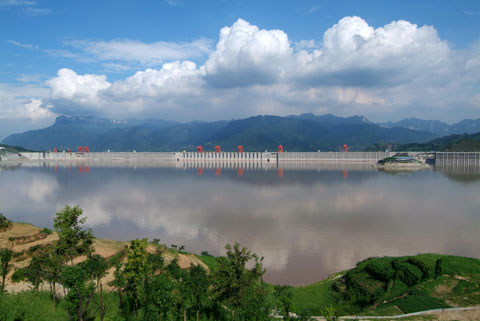China says silt in Three Gorges Dam area under control
Updated: 2007-11-27 19:08
BEIJING - Silt accumulation will not be a problem for the massive reservoir of the Three Gorges dam project, Chinese officials said here on Tuesday.
Wang Xiaofeng, director of the office of the Three Gorges Project Committee of the State Council, said through careful planning silt accumulation at the 660-kilometer-long reservoir, the world's largest water conservation project in Hubei Province, was less than 40 percent of the annual projected figure.
"We anticipated the reservoir would accumulate 530 million tons of silt each year. But the actual figure is only 200 million tons annually according to our monitoring in 2003 and 2006," he said.
Pan Jiazheng, leader of the project's quality control panel who has been responsible for the construction of several hydroelectric power stations around the country, said the problem of silt accumulation had been at the forefront since the start of the project.
Chinese engineers have had great experience in tackling silt accumulation since the early 1960s with the opening of the Sanmenxia Power Plant. The Yellow River dam in Shaanxi Province accumulated 1.5 billion tons of silt within two years of its 1960 opening, raising the river's bed significantly.
To alleviate the problem, holes were drilled at the bottom of the dam to let the silt pass through
At the Three Gorges, 23 big holes have been built at strategic parts within the dam. The passages are opened in the rainy season when there is more silt in the water.
Pan said in-depth research into the problem had been conducted before the project's launch and the current situation was under control. "The project is working even better than we had expected."
He was also confident that the Three Gorges dam would not be troubled by accumulations. He added "close monitoring" needed to be paid to the silt as the stored water level gradually reached its highest point.
Since 2002, China has allocated 200 million yuan (about US$27.06 million) to monitor the river's silt levels.
|
|
|
||
|
||
|
|
|
|


